Reviews
Agnès Varda
France, 1991
Credits
Review by Evan Kindley
Posted on 04 August 2010
Source MUBI.com
Categories Viva Varda: The Films of Agnès Varda
Jacques Demy was raised in the French coastal town of Nantes, a charming, photogenic location that will be familiar to viewers of his gorgeous debut feature, Lola. His subsequent films would range farther afield — venturing to Nice, Cherbourg, Rochefort, Los Angeles, Versailles, and lands beyond — but Nantes would remain his primary point of reference and the source of many of his best ideas. “His childhood was his treasure,” his wife Agnès Varda affirms in Jacquot de Nantes, a collaboration the couple began towards the end of Demy’s life that would dramatize the memories he had drawn on more obliquely in other films. Although Demy contributed to the writing of the script and was present for shooting, he passed away prior to its release, resulting in a sort of uneasy combination of swan song and elegy.
Played by three young actors at three distinct ages, Jacquot Demy grows up happily, for the most part, in relative petit-bourgeois comfort (though he does have to share a bed with his younger brother and a bedroom with his parents). His father, an auto mechanic, wants him to be practical and learn a trade, but Jacquot is more interested in Hollywood films and pop music, and soon sets about making his own ambitious stop-motion animated films in the family attic. He constantly begs his parents for more equipment, dreams of escape to Paris, reads movie magazines, and attends films and operettas (an obvious influence on his later musical films like The Umbrellas of Cherbourg), cultivating his own garden as the traumas of World War II threaten to the tear the world apart around him. For Jacquot lives simultaneously in a dream world and a war zone: he experiences the German Occupation, a devastating American bomb raid, and France’s subsequent liberation, absorbing it all with a certain quiet gravity.
At the same time, he is developing his technical skills — he confidently explains the “day for night” camera process to a group of impressed friends — and shows increasing ingenuity as an amateur filmmaker (mounting his camera on a rollerskate to get homemade crane shots, for example). Despite his obvious talent, few of the adults in Jacquot’s life are particularly encouraging: in technical school he learns about the difference between manual and intellectual workers, with a clear emphasis on society’s preference for the former, and is warned by one of his teachers that “[t]he cinema is another world. Many are called, few chosen.” Finally, though, he manages to show his finished film to the filmmaker Christian-Jacque, on the strength of whose recommendation he is accepted at the École Technique de Photographie et Cinématographie in Paris. At this point Jacquot de Nantes breaks off, the child of the film’s title having come of age as an artist: “He was pulling at his moorings. Jacquot was becoming Jacques.”
As the above synopsis may suggest, Jacquot de Nantes is a film of episodes, more a string of reminiscences than a narrative per se. Varda uses a number of unusual techniques to unify the anecdotal material, most noticeably a frequent alternation of black and white film stock and color. While some of the switches seem purely arbitrary, the device is most often used to imply subjectivity, as if we are suddenly seeing the world through the youthful Demy’s eyes: for instance, an early scene shows us Jacquot and some other children watching a marionette theater performance, filmed in color; reaction shots of the kids are in black and white. Apparently the idea is to achieve a sort of Wizard of Oz effect, in which a prosaic, everyday world is suddenly transformed into Technicolor fantasy.
This aim is even clearer in the other trick Varda will use throughout Jacquot, which is to juxtapose settings and events from Jacquot’s life with clips from the adult Demy’s movies. The first time this occurs, a lengthy tracking shot taking us through the Demy garage concludes with a bright, brassy number from Umbrellas set in a similar garage. Later, a viewing of Walt Disney’s 1937 Snow White and the Seven Dwarfs will give way to footage from Donkey Skin, with Catherine Deneuve in the fairytale heroine role; a torch singer at a restaurant prompts Anouk Aimée’s famous performance of the title song in Lola; and so forth. Surprising and daring at first, this conceit depreciates with steady repetition and becomes rather mechanical after a while — an impression not helped by Varda’s insertion of a pointing-finger placard before and after each excerpt. Meant to direct us forward and backward in time, it might as well be poking us in the ribs.
Finally, Varda incorporates documentary footage of Demy speaking directly to camera, shot in the last years of his life, to fill out the narrative and draw out the significance of various events. This is the biggest misstep in the film, I think: shots of the haggard, tired-looking, obviously ill Demy, dressed in clothes that look several sizes too large for him, can’t help but be affecting, but they add little in the way of insight, and tip the film even further into the category of an elaborate home movie (although this is arguably exactly what Varda and Demy were out to achieve). The device also spoils at least one potentially effective moment, in which Jacquot and his schoolmates look up from a grammar lesson to see an American airman parachuting down into a nearby field — an arresting moment, until Varda spoils it by cutting to footage of Demy explaining how it occurs to him every time he hesitates over a past participle agreement.
The problem with Jacquot de Nantes is that there is too much supplementary material to allow us to concentrate completely on the story, but too little for the film to work as a palimpsest or hybrid cine-essay in the style of Chris Marker (or, indeed, some of Varda’s own films): it’s more like a fairly conventional European coming-of-age film interrupted every fifteen minutes or so to make sure we’re getting all the nuances. It makes sense that a collaboration between Demy and Varda, two very different filmmakers, would split the difference between his candy-box romanticism and her commitment to local and domestic detail, but unfortunately Jacquot de Nantes falls between two stools, diluting both auteurs’ approaches into a blandly pleasant film that only rarely rises above the level of, say, Cinema Paradiso. Most of the scenes feel too much like what they are: staged reenactments, impeccably accurate, but with a sense of stasis that Demy’s own films, for all their overt artificiality, never had. To be fair, the lack of dramatic tension has got to be a deliberate choice on Varda’s part, since she pointedly passes up some prime chances: in what is, or could be, the film’s most dramatic moment, Jacquot, frustrated at being stuck in technical school, unexpectedly throws his shaving bowl at a kitchen window and shatters it. Varda immediately cuts away, as if embarrassed for him: this is not the Jacquot she knows.
There are other missed opportunities here. One understandably underdeveloped theme is the young Jacques’ sexuality. Demy, we now know, was a closeted bisexual who died of complications resulting from AIDS, facts that Varda chose not to admit publicly until her 2008 film The Beaches of Agnès. His own films have high camp aesthetic hallmarks that many today would tend to associate with queer cinema, though his public persona during his lifetime was, of course, that of a heterosexual family man. While Jacquot de Nantes shows him experimenting with several willing young women, it also acknowledges that he maintained a defiant distance from conventional masculinity from an early age, detesting all forms of violence1 and preferring “women’s films” like Marcel Carné’s Les enfants du paradis and Marcel L’Herbier’s L’affaire du collier de la reine to more typically male-oriented fare.
Of course Varda, Demy’s wife of nearly thirty years and the mother of his child, can’t be faulted for being a little circumspect in this department, but in any case, there is none of the genuine interest in child sexuality displayed in Fellini’s Amarcord, for instance. Varda’s affection here is for a precocious, presexual “Jacquot,” not for a complex adult “Jacques,” and her singleminded focus on his budding creativity reads in some ways as a sublimation of a sexuality she can’t fully share or understand. Demy also indicates something about this marital dynamic towards the end of the film, when he summarizes their relationship (and dual career trajectory) in a single sentence: “I met a woman filmmaker, we made a few films, then she gave me a fine son, and now I paint.” There is a great deal more to this story, of course — what marriage, indeed what life, isn’t richer than the works of art that it produces? — but that’s all Demy and Varda cared to tell, at least at that time. Given how close to the end Demy was in 1990, when the film was shot, they can be forgiven a few sentimentalities.
This is not to say that Jacquot de Nantes is without its charms: any fan of Demy’s will find it worthwhile, if only as a controlled experiment, to see what exactly he brought qua director to the raw material of his experience. It will probably also please viewers with a weakness for cute little French kids: while nowhere near as good a film, it’s impossible not to recall François Truffaut’s The 400 Blows or Jean Vigo’s Zero de conduite at times and smile. But it may speak to Varda’s overall dissatisfaction with the film that she would return to her husband’s life in two later documentaries, The Young Girls Turn 25 and The Universe of Jacques Demy. Jacquot de Nantes is a tasteful farewell, its better moments as light and pleasing in their way as Demy’s own cinema, but the real work of mourning was still to come.
- Interestingly, militarism and homoeroticism are linked early on in the film when a couple of male friends ask Jacquot to “show us yours,” adding that “they do it later, in the army.” Soldiers, particularly American ones, are also a recurring object of fascination in the film, as they are in Lola.↩
More Viva Varda: The Films of Agnès Varda
-
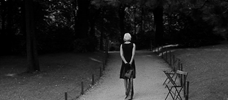
Cléo from 5 to 7
1962 -
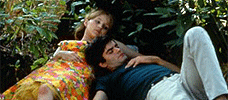
Le Bonheur
1964 -
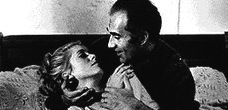
Les Créatures
1966 -
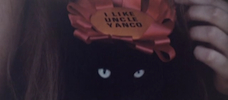
Uncle Yanco
1967 -
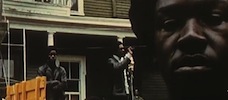
Black Panthers
1968 -
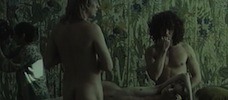
Lions Love
1969 -
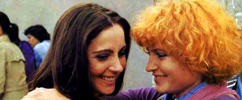
One Sings, the Other Doesn’t
1977 -

Daguerréotypes
1976 -

Mur murs
1981 -
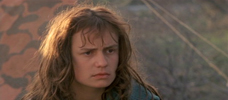
Vagabond
1985 -
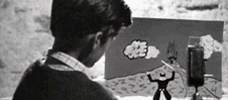
Jacquot de Nantes
1991 -

One Hundred and One Nights of Simon Cinéma
1995 -
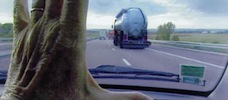
The Gleaners and I
2000 -
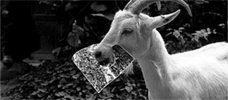
Cinévardaphoto
2004 -
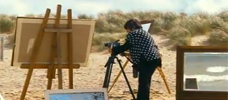
The Beaches of Agnès
2008
We don’t do comments anymore, but you may contact us here or find us on Twitter or Facebook.



